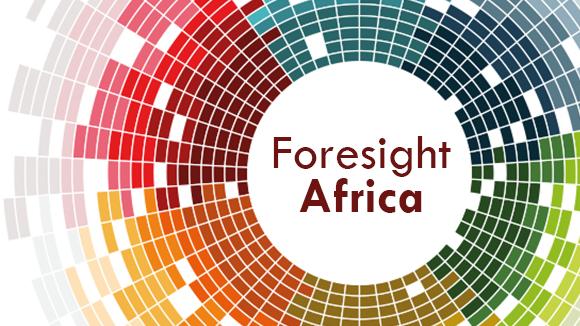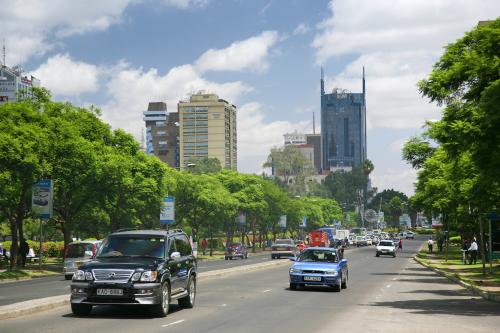Below is a viewpoint from the Foresight Africa 2023 report, which explores top priorities for the region in the coming year. Read the full chapter on Africa’s cities.
 Housing is a key component for achieving social and economic development. As such, adequate, safe, and affordable housing is at the core of Goal 11 of the 2030 Agenda for Sustainable Development (i.e., attaining Sustainable Cities and Communities). Moreover, housing related activities and investment are major economic drivers, serving as an important contributor to economic activity and job creation.
Housing is a key component for achieving social and economic development. As such, adequate, safe, and affordable housing is at the core of Goal 11 of the 2030 Agenda for Sustainable Development (i.e., attaining Sustainable Cities and Communities). Moreover, housing related activities and investment are major economic drivers, serving as an important contributor to economic activity and job creation.
The role of the housing and built environment in attending to the challenges of climate change
At the same time, it is widely acknowledged that climate change will affect the socioeconomic development trajectory of Africa, threatening the region’s attainment of the 2030 Sustainable Development Goals and the objectives of the Africa Union’s Agenda 2063.
However, a less acknowledged fact is that climate change cannot be solved without delivering climate resilient housing and tackling building emissions, as buildings account for 19 percent of the world’s Green House Gas (GHG) emissions. According to the Intergovernmental Panel on Climate Change (IPCC) special report, by 2030, all new buildings must be zero net carbon, and existing buildings must be zero net carbon by 2050.
Climate change cannot be solved without delivering climate resilient housing and tackling building emissions, as buildings account for 19 percent of the world’s Green House Gas (GHG) emissions.
What is climate-resilient housing?
Resilient housing can be described as housing that can resist, recover, and adapt to adverse effects of climate change or natural disasters. It is the capacity of human settlements to cope with shocks (environmental, economic, and social) and respond to these shocks over time. Thereby, resilient houses are required to be planned, designed, built, operated, and maintained to reduce vulnerability to these indicated threats.
Recent developments in climate change initiatives in the construction industry in select African countries
Fortunately, progress is being made by city managers and other related stakeholders to tackle the challenge of climate change in the housing industry in Africa.
Kenya considers climate change a cross-cutting theme that is being mainstreamed in the medium-term plans of the County Integrated Development Plans (CIDPs), which in turn inform the country’s development blueprint—Vision 2030. Under these plans, the Government has mandated that all affordable housing projects be aligned with Global Green Certification requirements. Elsewhere, Nigeria recently promulgated the 2021 Climate Change Act, which is the first standalone climate change legislation in West Africa. The act encapsulates critical components of the country’s climate change policies, most of which were adopted in 2021. These include the revised National Climate Change Policy; National Climate Change Programmes; the 2050 Long-Term Low Emission Vision; and the first Nationally Determined Contribution (NDC).
Additionally, it is worth noting that over the past few years, there have been notable cases of resilient housing initiatives in Africa. An example of these is the climate resilient housing initiative at Mozambique, which was delivered through the Coastal City Adaption Project (CCAP).
Mozambique has been severely impacted by the effects of climate change, where an estimated 60 percent of the country’s 28 million people live in low-lying coastal areas, where sea-level rise and frequent intense storms cause flooding, erosion, and landslides, threatening communities, homes, and economic activities.
The CCAP programme was aimed at supporting local governments and communities in the cities of Pemba and Quelimane to develop affordable and resilient solutions and techniques for building.
The key design, construction elements, and techniques adopted in this initiative include low vulnerability site selection, which reduces potential impact of hazards (i.e., avoiding areas with high exposure to flooding and strong winds); raised foundation (i.e., elevated platform above the maximum level of flooding); reinforced wall (i.e., construction done with durable materials, such as coconut or bamboo wood) and secure roof with rainwater harvesting capacity (i.e., roofing design with an adequate slope to withstand strong winds and also facilitate rain harvesting system).
Another example of resilient housing technology is in Malawi, where Durabric is increasingly being used as a more sustainable alternative to traditional burnt clay bricks for housing construction. The compressed earth stabilised block is made using a combination of locally sourced materials, comprising of earth, sand, cement, and water. Durabric has proved to be an affordable alternative for resilient housing delivery, with resultant impacts in terms of curbing deforestation and carbon emissions, in addition to building local capacity in the industry.
Way forward and conclusion
While there have been moderate achievements in developing legislation, tools, and policies to enhance climate-resilient housing and urban development in select African countries, these initiatives have relied on global templates and standards, which may be difficult and expensive to replicate at scale in the African context.
Moreover, advocacy and awareness among stakeholders on climate change acts and standards are required. Public and private entities need to be proactively engaged, to understand the implication of these standards and laws on their activities, as well as their respective obligations.
Most importantly, housing delivery and built environment stakeholders should take advantage of the recently introduced climate-change policies and their incentives, to introduce technological innovations that can mitigate the impact of climate change in the industry.
In conclusion, as Africa continues to experience unprecedented rates of urbanization coupled with increasing climate related incidences, it is pertinent for stakeholders to put in more effort in making housing safe and resilient to climate change related impacts. This in turn can help protect lives and livelihoods from disasters and build sustainable communities.
The Brookings Institution is committed to quality, independence, and impact.
We are supported by a diverse array of funders. In line with our values and policies, each Brookings publication represents the sole views of its author(s).








Commentary
Enhancing climate adaptation: The role of climate resilient housing in Africa’s cities
August 15, 2023